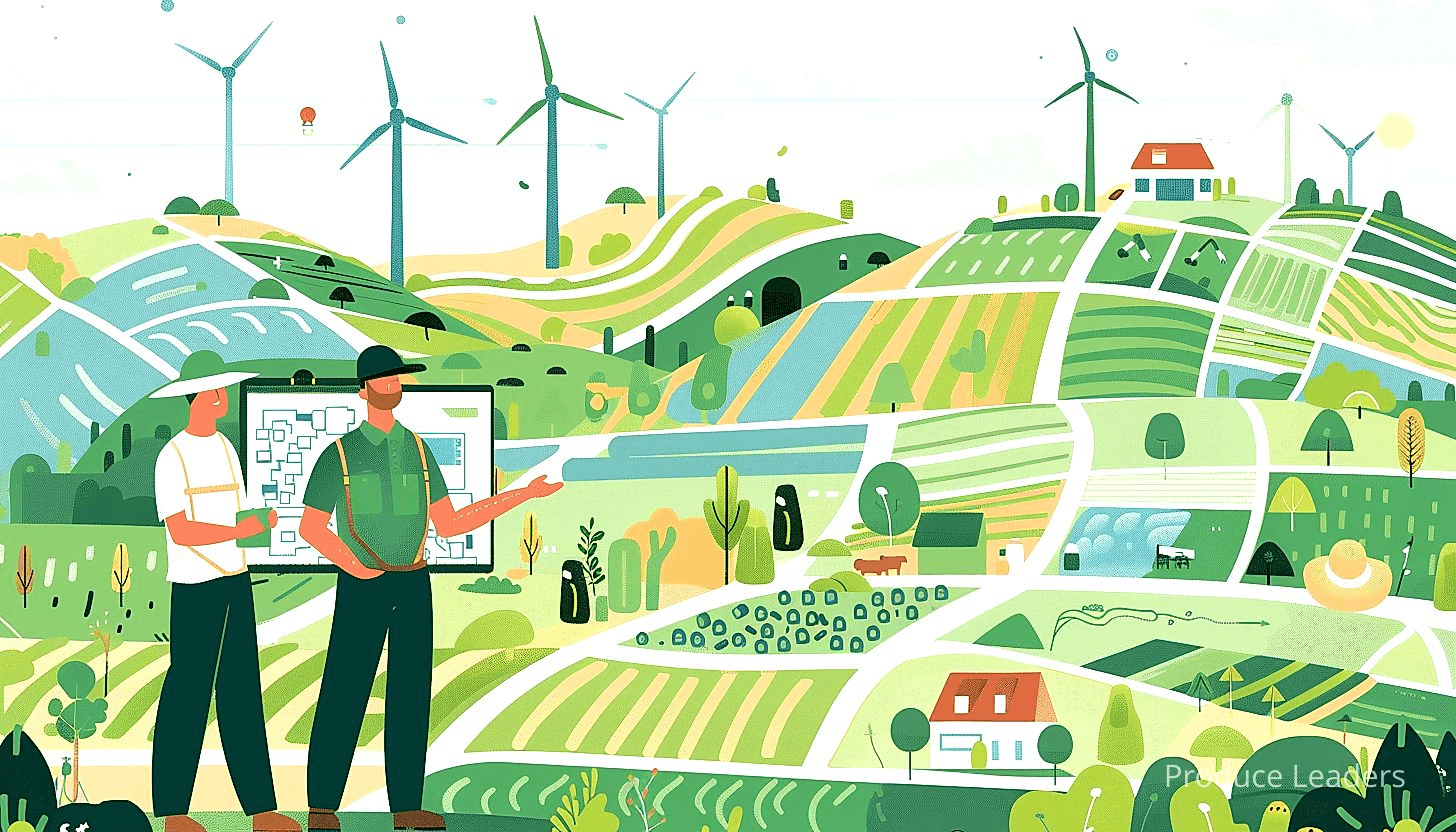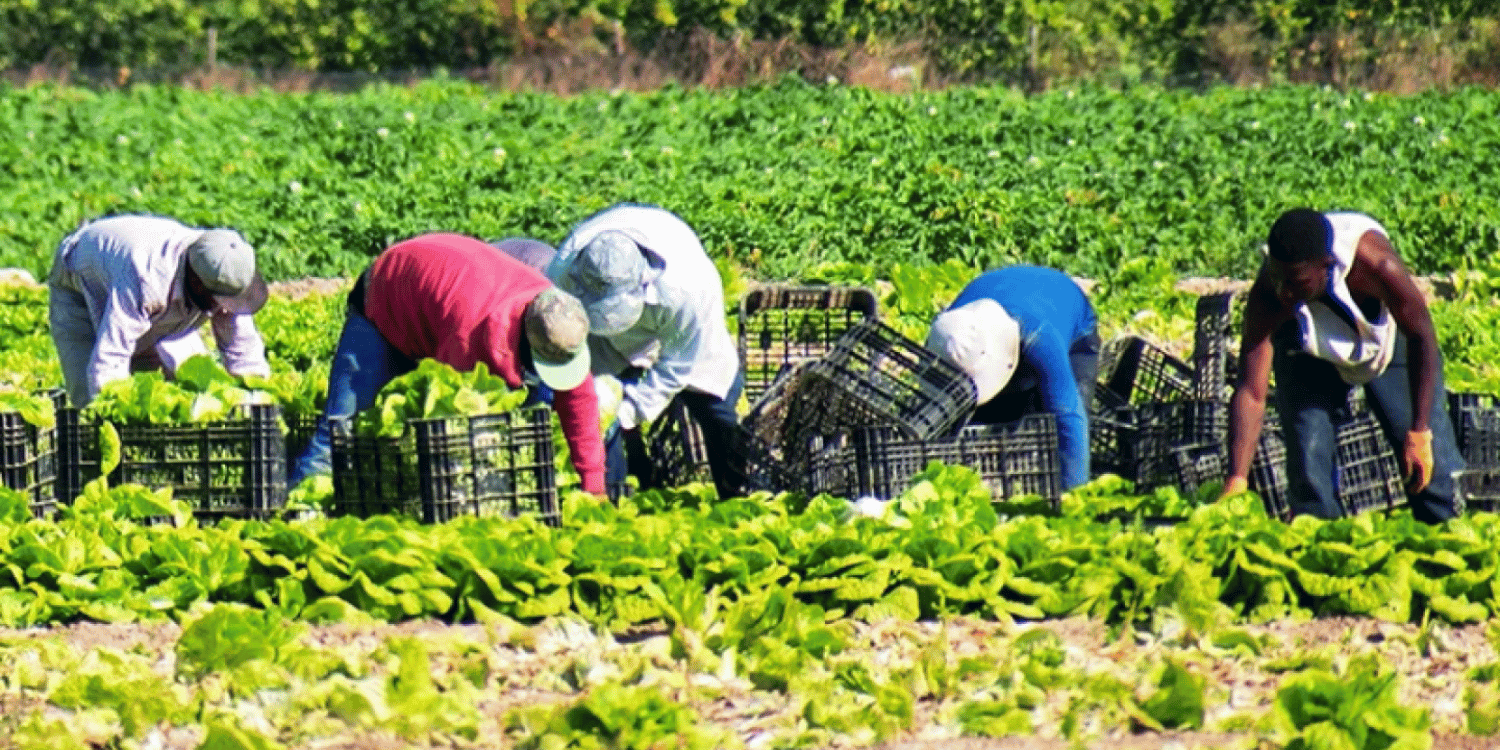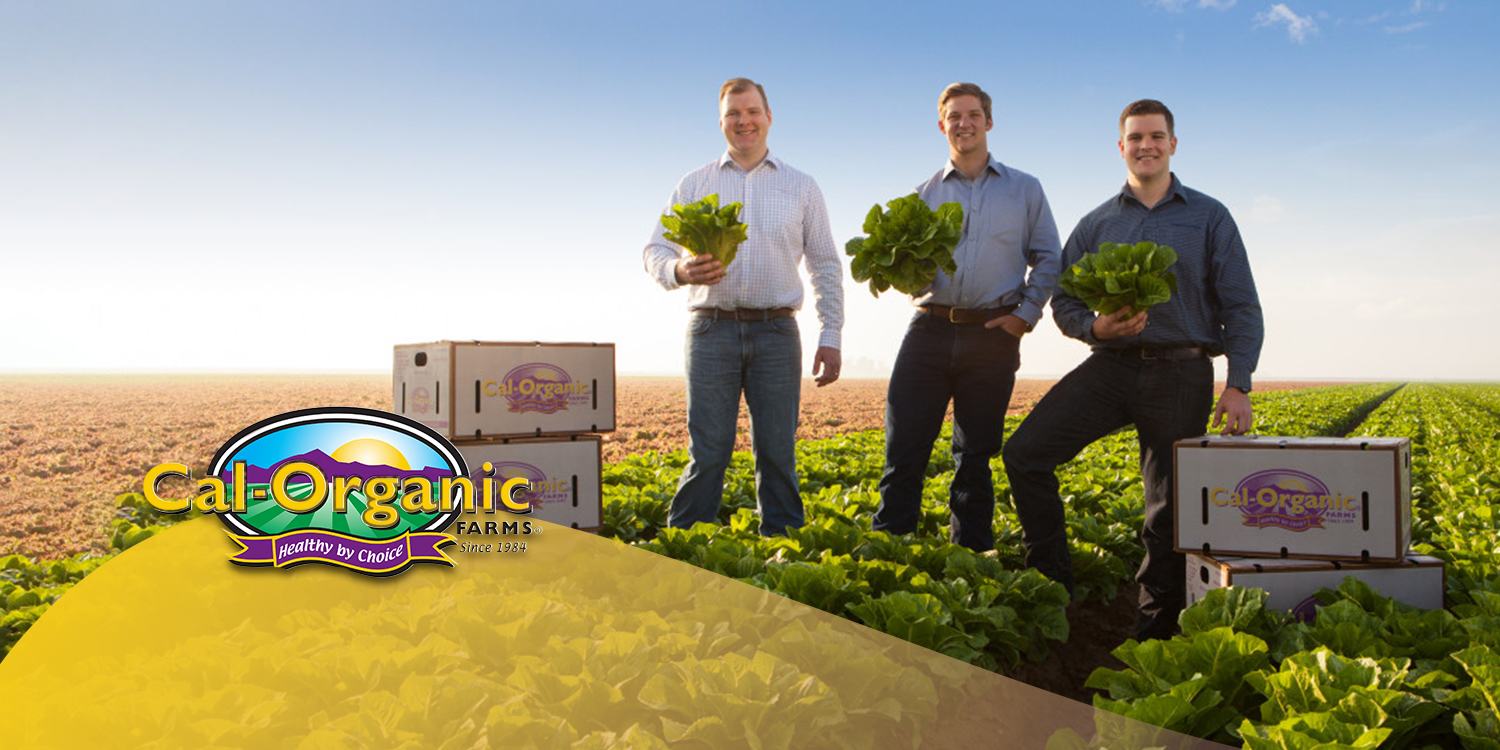Collaborative logistics have become a driving force within the agriculture sector.
This development ensures streamlined workflows and operational efficiency.
It involves coordinated efforts between diverse participants to enhance performance.
Not only does it boost productivity but also reduces costs.
This article will dig in into how this strategy contributes to the agriculture industry.
Stay with us as we discuss the tangible advantages of implementing this integrated approach.
- Collaborative logistics reduces operational and transportation costs in agriculture.
- It leads to increased supply chain efficiency.
- Using collaborative logistics can improve resource optimization.
- This strategy promotes sustainable farming practices.
- Collaborative logistics enhances farmers’ earning capabilities.
While we have outlined the primary benefits of collaborative logistics in agriculture, it’s important to note that the conversation does not end here. There’s much more intricate information for you to absorb as we tackle other related topics in the upcoming sections.
Patience will yield rewarding insights as we explore the nitty-gritty elements that make this collaborative initiative a boon for the agriculture industry. This includes not only its economic impacts but also its considerable influence on sustainable farming.
Shedding light on these facets will provide you with a holistic understanding of collaborative logistics and its game-changing role in modern agriculture. Let me tell you, come along on this fact-filled exploration, where there’s always more to discover, learn, and understand.
Contents
Benefits Of Collaborative Logistics In Agriculture
1. Reduces overall operational and transportation costs
In Short: Collaborative logistics in agriculture significantly reduces operational and transportation costs through strategies like shared storage, pool point distribution, and shared transportation. This system promotes optimal capacity utilization, transparency, constant monitoring, quicker decision-making and cost management, fundamentally transforming the agricultural industry into a more robust, efficient, and cost-effective sector.
With the advent of collaborative logistics, an innovative movement acting as a game-changer in the field of agriculture, comes consequential benefits including the significant reduction in overall operational and transportation costs.
This results into an economically stable and resilient farming industry, where limited resources are utilized in an optimal manner, paving the way for maximized profits and minimized expenditures.
Through such a mechanism, a strategic cooperative framework is activated designed to systematically link agricultural operations with each other through seamless logistical integration, essentially trimming down unnecessary costs.
One of the impressive features of collaborative logistics is its core focus on centralization.
Here, a few key strategies of centralization aiding in the reduction of operational and transportation costs are listed down:
- Shared Storage: Under collaborative logistics, dedicated storage centres are typically set up at strategic locations close to farming clusters. This approach minimizes transportation costs, as the need for each individual farmer to develop and maintain their own storage facilities is mitigated.
- Pool Point Distribution: This distribution system involves consolidating shipments from various farmers at a centralized location, from where the products are then distributed to retailers or end consumers. This not only leads to logistics efficiency but also facilitates substantial savings.
- Shared Transportation: Enabling farmers to share transportation services reduces fuel costs, mitigates the carbon footprint, and also densifies the supply chain. It facilitates economies of scale and reduces transportation costs by maximizing the usage of available vehicles and reducing instances of partially filled or empty trips.
With such a sophisticated system in place, optimal capacity utilization is naturally encouraged reducing waste and redundancy that are potentially draining on resources, time and investment.
Intriguingly, the collaboration and centralization accompanying collaborative logistics also allow for constant and real-time monitoring of agricultural operations across various touchpoints within the chain.
This promotes heightened transparency and accountability, instilling mutual trust and confidence among the involved stakeholders, which can followingly spur enhanced productivity while ensuring meaningful cost savings.
For instance, the implementation of advanced tracking systems empowers farmers to maintain close observations on transportation routes, estimated delivery times and other crucial elements that directly influence operational and transportation costs.
Consequently, this aids in quicker decision-making processes, enabling adjustments in a timely manner to avoid delays or disruptions within the logistics pipeline, and thus aid in cost management.
Moreover, through combined negotiations, stakeholders involved in collaborative logistics can leverage their combined buying capacity and intrinsic market knowledge to negotiate freight rates, warehousing costs, and even insurance premiums, providing significant opportunities for cost reductions.
Also, with the industry’s shift towards digitization, the inception of sophisticated technologies like AI, Machine Learning, and ERP solutions not only simplifies managing complex logistics operations, but also fuels cost efficiency and resource optimization in agriculture.
In effect, through the lens of collaborative logistics, the agricultural industry has been bestowed with a blueprint to build more robust, scalable, efficient, and cost-driven operations while ensuring the longevity of the sector.
2. Increases Supply Chain Efficiency
In Short: Collaborative Logistics, designed to streamline supply chain processes, has shown potential to drastically boost efficiency in the agricultural sector by promoting resource sharing, reducing travel times and facilitating seamless communication and coordination among stakeholders. Besides enhancing transportation efficiency and resource utilization, it promotes transparency, reduces waste and product decay, aids in carbon footprint reduction, and strengthens supply chain resilience.
Efficiency in the supply chain domain historically faced myriad challenges, particularly in the agricultural sector.
When it comes to making impactful improvements in this area, the adoption of Collaborative Logistics stands out as a promising solution.
Primarily designed to streamline processes in the supply chain, Collaborative Logistics essentially promotes the sharing of transportation, operational, and informational resources between different entities.

This results in fewer vehicles on the road, reduced travel times and associated energy consumption, and ultimately an elevated level of efficiency.
Collaborative Logistics also brings about harmony in the otherwise fragmented stakeholder networks engaged in agricultural activities.
This transformation is achieved by facilitating seamless communication and coordination among growers, distributors, retailers, and even consumers.
Here’s a synopsis of the key ways in which Collaborative Logistics enhance supply chain efficiency:
- The reduction of empty backhauls enhances transportation efficiency.
- Maximizing load capacities of vehicles leads to better utilization of resources.
- Sharing of real-time information amongst stakeholders promotes transparency and trust.
- Minimizing product loss/decay through quicker turnaround times accentuates efficiency.
- Reducing the overall complexity of supply chains also bolsters their resilience.
Essentially, Collaborative Logistics represents a more sustainable model for logistics management and comes with an eco-friendly attribute.
By reducing unnecessary haulage, the model aids in the reduction of the carbon footprint.
Reducing waste from agricultural products that decay due to long delivery times is certainly another advantage of faster, well-coordinated delivery systems brought about by Collaborative Logistics.
The synchronization of shipments can help reduce storage requirements, thereby optimizing warehouse space and adding another layer of efficiency.
Furthermore, the sharing of supply chain risk through collective problem-solving mechanisms inherent in the collaborative logistics model contributes to a more robust supply chain.
It’s worth mentioning that Collaborative Logistics also increases efficiency by unifying the diverse and often conflicting objectives of supply chain entities into a common goal that serves the whole ecosystem better.
In a rapidly evolving global market, adopting these methods could decisively position agricultural stakeholders for the full spectrum of challenges and opportunities that lie ahead.
3. Improves Resource Optimization
In Short: Collaborative logistics in agriculture improves resource optimization, reducing waste and boosting efficiency, which directly enhances productivity, profitability, and sustainability. This method notably increases farmers’ earnings while mitigating environmental impacts, emphasizing cost reduction, sustainable farming practices, and optimized use of machinery, labor, and land.
When considering the benefits of collaborative logistics in agriculture, resource optimization stands as a significant advantage.
By melding abilities and capacities of multiple stakeholders, collaborative logistics minimizes waste and promotes efficient resources usage in the agricultural sector.
The importance of optimizing resources in agriculture cannot be overstated as it directly impacts productivity and profitability.
Whether it’s optimizing the use of machinery, labor, or land, improvements in these areas can lead to larger yields and higher earnings for farmers.
In the heart of resource optimization, there are several important elements to highlight:
- Less Wasted Time and Effort: By consolidating various logistical operations, there is less need for redundant tasks, resulting in more maximum efficiency.
- Better Use of Machinery: With coordinated efforts, machinery and equipment can be used more effectively, reducing idle time and increasing production.
- Optimized Use of Land: Through data sharing and collaboration, farmers can better understand soil conditions and crop growth patterns, enabling them to make most of the available land.
- Efficient Labor Utilization: Through a synergized workforce, labor can be optimally distributed, ensuring that each worker’s potential is maximized.
Moreover, optimized resource utilization also contributes to reduced operational costs, which directly impacts the bottom line.
The economic benefits for farmers are thus notable, leading to increased earning capabilities and opportunities for diversification and expansion.
Yet, resource optimization does not just concern cost reduction, but also a reduction in dependency on finite natural resources.
Through collaborative logistics, agricultural stakeholders can share best practices for sustainable farming, promoting conservation of important resources such as water and soil.
Additionally, efficient resource optimization plays a role in mitigation of environmental impact by reducing waste and improving energy efficiency.
Therefore, resource optimization not only enhances the productivity and profitability of the agricultural sector but also contributes significantly to sustainability in the industry.
With a growing global population to feed and a planet to care for, the agricultural sector needs strategies like collaborative logistics to optimize and sustain resource utilization.
Whether from an economic or environmental perspective, it’s clear that the benefits of collaborative logistics in improving resource optimization are vast and important.
4. Promotes Sustainable Farming Practices
In Short: Collaborative logistics in agriculture promotes sustainable farming practices by advocating for efficient resource use, waste reduction, and the adoption of eco-friendly technologies. It benefits not only the environment but also contributes to economic prosperity by optimizing costs and opening potentially lucrative markets for sustainably-produced agricultural products.
One of the oft-overlooked benefits of collaborative logistics in agriculture is its contribution to promoting sustainable farming practices. A more centralized and streamlined logistics approach can drive a major transition toward more sustainable agricultural operations.
By facilitating joint decision-making, the collaborative nature of such logistics allows for a more thoughtful approach to farming activities. This includes the careful planning around resource use and waste output, which are critical factors that affect sustainability.
More so, the sharing of knowledge and resources which is possible through collaborative logistics, opens up possibilities for adopting and implementing more sustainable farming methods.

Let’s talk more about how collaborative logistics promotes such practices:
- Reduction in waste output: Through efficient routing, load optimization, and strategic scheduling of deliveries, waste associated with transport can be minimized. This reduction significantly contributes to environmentally friendly farming procedures.
- Optimized resource utilization: When resources are pooled together and carefully distributed, there is typically less wastage. Such an approach is key in managing scarce resources, leading to increased sustainability.
- Adoption of eco-friendly technologies: Working together could mean the pooling of resources to invest in eco-friendly technologies such as renewable energy systems or low-emission vehicles, which would be otherwise expensive for a single farmer.
Also, collaborative logistics could lead to more efficient use of land. Shared access to extensive and efficient infrastructural networks can reduce the need for individual small farmers to clear additional land for access, thus reducing deforestation.
It can support small-scale farmers who are often more sustainable in their practices, but are marginalized due to economic and logistical constraints. By bringing such farmers into the mainstream supply chain, collaborative logistics can possibly make agriculture more sustainable on a larger scale.
The role of such logistics in promoting sustainable farming is not only a significant environmental advantage but also brings about economic benefits. Lower waste output and optimised resource utilization naturally lead to cost savings. Moreover, sustainability often resonates with consumers, thus opening potentially lucrative markets for sustainably-produced agricultural products.
In essence, the adoption of collaborative logistics is not merely about improving the efficiency and reducing the costs of agricultural operations. It’s just as much about advancing sustainable farming practices, thus making the agricultural sector more responsible and resilient.
However, while the benefits are substantial, it is essential to acknowledge that collaborative logistics requires a concerted effort from all stakeholders. This entails not just farmers, but also, transport providers, policymakers, not forgetting customers.
In order to tap into these potential benefits, it is crucial to foster a culture of cooperation, transparency, and willingness to embrace new technologies and methods. In doing this, collaborative logistics can indeed become a mainstay in modern, sustainable agricultural practices.
5. Enhances Farmers’ Earning Capabilities
In Short: Collaborative logistics in agriculture amplifies farmers’ earning potential by giving them greater control over their produce, reducing dependence on middlemen, cutting down waste, and providing opportunities to diversify. It also enhances the farmers’ ability to respond to market changes, promoting both increased income and sustainability within the farming community.
One of the most remarkable benefits of collaborative logistics in agriculture is its potential to significantly enhance farmers’ earnings.
This approach empowers farmers by giving them more control over their produce and considerably reduces over-reliance on middlemen.
With collaborative logistics, farmers participate directly in the supply chain, translating into higher profit margins.
Also, through the efficient use of resources, farmers can cut down on wastage and losses, further increasing their net income.
Moreover, this strategy offers the advantage of increased predictability in the agri-business with better inventory management and production planning capabilities.
Collaborative logistics also paves the way for opportunities for farmers to diversify their products and services.
Through the sharing of resources and knowledge, farmers can venture into the production of specialty crops or other agri-based ventures, creating multiple income streams.
Here are the key ways this strategy can enhance a farmer’s earning capabilities:
- Increased control – Participating directly in the supply chain allows farmers to sell their produce at better prices.
- Reduced wastage and losses – Efficient resource allocation and inventory management result in minimal losses, directly impacting the farmer’s bottom line.
- Predictability – Better planning and inventory management promote a predictable and stable income for farmers.
- Diversification – Resource and knowledge sharing enable farmers to explore other income-generating ventures.
This system promotes the concept of shared economies, where farmers work together to maximize their earning potential.
When they work in collaboration, small scale farmers can enjoy the same level of bargaining power as large scale farmers.
This is a significant shift from the traditional notion, where independent farmers often wrestle with low-profit margins because of their limited ability to negotiate better prices and the high costs of logistics and transportation.
Beyond immediate financial benefits, the adoption of collaborative logistics also enhances farmers’ capabilities to respond to market changes.
Pro Tip: Leverage collaborative logistics in agriculture to enhance your earning potential through increased control over produce, reduced wastage, predictable income, and opportunities for diversification.
This agility could lead to long term earning stability in a time of fluctuating commodity prices and changing consumer demands.
Finally, in balancing efficiency and profitability, it is essential to mention that collaborative logistics not only has the potential to raise farmers’ income but also plays a significant role in promoting the sustainability of the farming community.
The Bottom Line
Through the utilization of collaborative logistics, agriculture can significantly optimize operations, increase cost-effectiveness, and promote sustainable practices.
By sharing resources and information between different businesses, they can streamline their supply chains and enhance their competitiveness in the market.
Moreover, this collaborative model fosters the development of innovative solutions, thus driving progress in the agricultural sector.
Finally, collaborative logistics help to reduce the environmental impact of agriculture by facilitating the efficient use of resources and minimizing waste.
Overall, collaborative logistics present a valuable approach for agribusinesses seeking to thrive in today’s fast-paced and increasingly interconnected global landscape.




















